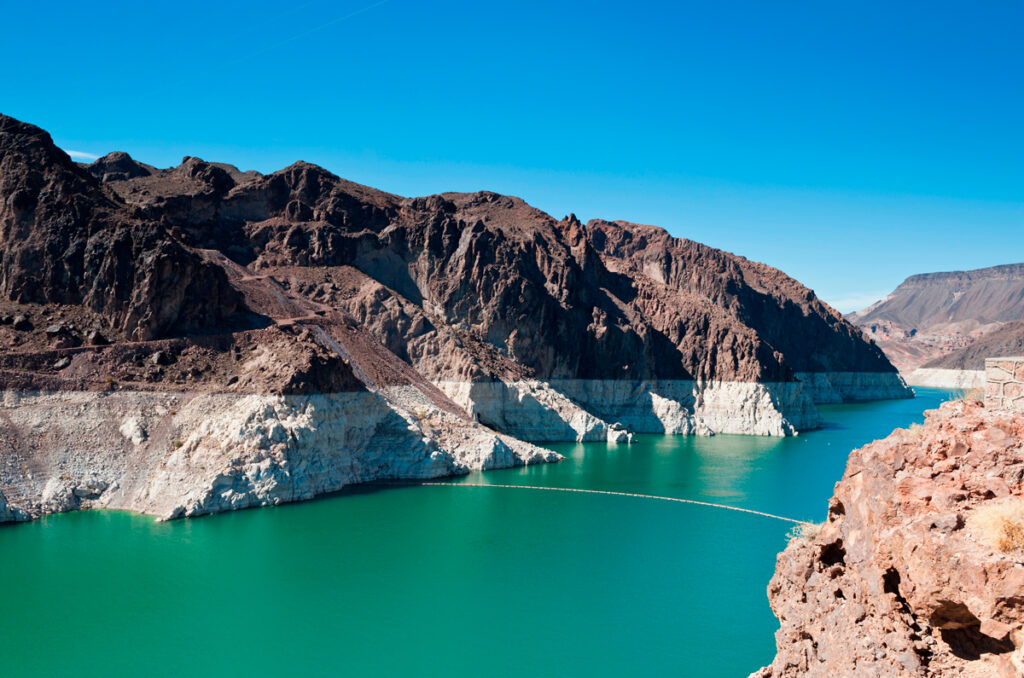Posted: September 15, 2021
On the heels of one of the driest years in recorded history California will begin a new “water year” on October 1st.[1] An inventory of existing water assets does not build confidence that we are prepared for yet another dry year. Photos prominently placed in print media are circulating the internet of an empty Folsom Lake, a small puddle formerly known as Oroville reservoir and a crashing Lake Mead.[2]
To address the challenge, the California State Water Resources Control Board is taking the unusual step of curtailing diversions on the American River, the Sacramento River and most northern California streams going so far as limiting users with priority dates in the 19th Century.[3] The California State Water Project (SWP), which delivers water stored in the Sierra Nevada, delivered only 5% of its capacity in 2021 and next year, it is expected to start the Water Year forecast deliveries at 0% of capacity.[4] This month the California Department of Water Resources began preparing to take the unprecedent step of invoking Article 18 for the SWP which would enable it to override whatever contract entitlements there might be in favor of domestic use, fire protection and sanitation requirements. This step might ensure water for particularly hard-hit communities, but it could actually make things worse by casting a cloud of uncertainty over the entirety of the SWP. How will essential uses be measured, how will necessary water be delivered and how will the rules impact pending and planned transfers of SWP all remain open, unanswered questions.
Meanwhile, Lake Mead and the entire Colorado River storage system sits at its lowest point in history and the United States department of interior’s Bureau of Reclamation is in the process of implementing shortage sharing regulations in the lower Colorado river basin. [5] This will undoubtedly impact the 40 million people and 5 million acres of farmland that rely on water from the Colorado River system, including urban, suburban, rural, and farming communities across southern California.[6]
Against this backdrop the California Legislature ended its session on Friday September 10, 2021 with surprisingly very few bills passed addressing the water supply and infrastructure challenge. [7] For example, a bill sponsored by Senator Melissa Hurtado (D- CA) of the Central Valley that would have spent $785 million to fix water infrastructure in the area, was shelved despite making it through several committees.[8] The Legislature did pass a budget trailer bill before the session ended that dedicated approximately $1.2 billion to fund augmentation of existing programs, additional studies, water recycling projects and cleaning up contaminated water sources. However, the trailer bill does not expressly or urgently address storage and infrastructure that can also improve the outlook for hard hit communities.[9]
It is true that the Federal government is poised to adopt a new infrastructure package that includes provisions that aim to improve western water infrastructure and make investments that should in the long-term assist water short communities, but the path to adoption is unclear. [10] Regardless, it is expected that the federal government will need to focus on the Colorado River in 2022 as Lake Mead and Lake Powell continue to be pushed to their limits.
The news cycle covers the spectacle of drought very well – but not the human cost. The economic consequences of shortage can be measured by metrics: Lost jobs, lost farms, lost business, forgone commercial opportunities. Human suffering and dents in the quality of life are much more difficult to capture. These impacts are felt typically in underserved and disadvantaged communities.
Cadiz stands ready to do its part in addressing the long-term systemic shortages now facing the state of California. We believe in providing new water to needy people, through conservation, repurposing existing infrastructure and harnessing the natural advantages of our land holdings. We offer one of the only off-river, unpolluted and largely untapped groundwater basins in the West with the physical capacity to store more than 1 million acre-feet and deliver 50,000 acre-feet per year off property wherever it may be needed in California. Our 220-mile pipeline provides a route to help underserved areas of California. These are communities in need that can be assisted by direct delivery of water and exchanges. Regardless, it will take an “all of the above” strategy and commitment to meet the Herculean challenge that faces our state. We are ready to do our part.

Lake Mead is the largest reservoir in the United States and part of a system that supplies water to at least 40 million people across seven states and northern Mexico. It stands today at its lowest level since Franklin Delano Roosevelt was president.
[1] https://weather.com/news/climate/news/2021-07-08-california-driest-rain-year-record-2021
[2] https://www.smithsonianmag.com/smart-news/hoover-dams-lake-mead-hits-lowest-water-level-1930s-180978022/
[3] https://www.pbs.org/newshour/nation/how-californias-drought-is-stressing-a-water-system-that-delivers-water-to-millions-of-residents
[4] http://www.coastalview.com/opinion/california-drought-update/article_7d636618-0080-11ec-8404-334d8ab67078.html
[5] https://www.latimes.com/california/story/2021-08-17/amid-worsening-drought-mwd-declares-water-supply-alert , https://www.nytimes.com/2021/08/16/climate/colorado-river-water-cuts.html
[6] https://www.mwdh2o.com/planning-for-tomorrow/securing-our-imported-supplies/
[7] https://calmatters.org/explainers/california-legislature-bills-passed-2021/ , https://apnews.com/article/business-health-fires-climate-california-eec48e6279099449851b3c7f150cda33
[8] https://www.sacbee.com/news/california/water-and-drought/article254110403.html
[10] https://www.reviewjournal.com/news/politics-and-government/nevada/heres-whats-in-the-1t-infrastructure-package-for-western-water-2437826/